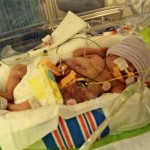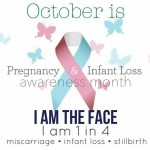World Breastfeeding Week

In August 2013, I wrote a post about breastfeeding for the site Mommifried. I’m sharing it here today in honor of World Breastfeeding Week.
The Truth About Breastfeeding, originally posted on Mommifried.
As we launch into World Breastfeeding Week, expect the Internet and social media sites to be filled with images of mothers nursing their babies, as has happened in the past years. In 2013, some examples of this were photos that UNICEF published, which are all very classy images and remind us all of the benefits of breastfeeding, particularly in third world countries, and for preterm babies, I would note.
I also saw some photos on Instagram and Facebook that, quite honestly, made me blush. And I can understand why some people would be uncomfortable.
Truthfully, I don’t like to see women breastfeeding.
But not for the reasons you are probably thinking. I don’t think it’s gross or inappropriate to do in public. In fact, most women I see nursing their babies in public use blankets or other cute cover ups and are very modest anyway. I think breastfeeding is wonderful and natural. (Although one time I did see what looked like a four year old hop up on his mama, and get right on up in there. That did make me feel uncomfortable, but to each their own!)
No, my reasons for not liking it are completely different.
It makes me sad to see another woman easily nurse her child.
It reminds me of my failures, of my loss, of an experience I was never able to enjoy.
Not all women really have a choice when it comes whether to breastfeed or not. Some of us have serious challenges.
I tried to breastfeed with all of my children, and was never successful with any of them. I could never have just popped my baby on and enjoyed the experience. It was hard, painful work, each and every time.
I struggled to produce milk. I tried every trick. Special teas, herbs such as Fenugreek, Blessed Thistle, Mothers Milk Tea; I increased my water intake, tried to get more sleep. I nursed more frequently and pumped between feedings. With my first, I gave up quickly. Our first week home, I sat in the recliner and nursed him for 30 minutes every hour all day long! He just could not get enough! I was cranky, he was cranky, and it was not a blissful situation. I wanted to make it for two weeks with no bottle. So I met that goal. After two weeks, I gave him a bottle of formula at his night time feeding and he slept five hours straight. We gladly moved to plan B – formula at night.
With my second, I had motivation to continue because she has a Milk Soy Protein Intolerance (MSPI) and we could not afford the formula. So I tried to keep with it. After months of painful, cracked and bleeding nipples effort, I finally increased my supply and was able to provide her 100% breast milk for 10 months.
Secondly, we had problems with latching.
We lived in Germany when my first child was born. There were no La Leche representatives, and the breastfeeding consultants were of very little help. They just gave me a nipple shield and that was about it.
I had the highest of hopes that I would finally have a normal nursing experience with my third child. I knew that, with effort, I could get my supply up. I was convinced I could figure out the latching issue, with help. And then I panicked when I found out I was pregnant with twins! But, that did not turn out to be an issue, because I never had the chance to even try with one, as she sadly passed away after two days.
Due to the stress, high blood pressure, grief, skipping all pumping the first two crazy days in the NICU, my milk supply was drastically low again, but I was bound and determined to provide breast milk for my 1lb 10 oz preemie fighting for her life. I did whatever it took to produce milk for her. I pumped every two hours, round the clock, for weeks. And after a month of full on dedication, I was rewarded with an increase in supply. Ironically, my little preemie had the strongest suck and latch thus far, but she could not figure out how to suck, swallow, and breathe together. So, I was denied the opportunity to nurse her. But I did pump until she was nine months old.
No one ever told me that nursing could be so hard. So when I see a mother just pop a baby on that boob, with little to no effort, it makes me sad and it makes me envious. I will never have that experience.
I support the right to nurse in public. I support the science behind the benefits of breast milk over formula (particularly for preemies.) But I do not support the backlash against women who chose not to nurse their baby. There may be more to the story than you realize.
And for those of you who do not like to see breastfeeding in public, stay inside on August 15th – it is National Public Display of Breastfeeding Day!
_______________________________________________
Since much of the focus of my blog is maternal and infant health, I do want to take a moment to present some information about the importance of breastfeeding in vulnerable communities.
Jennifer James of Social Good Moms wrote this:
This week marks the annual World Breastfeeding Week, where mothers and global health advocates express the critical importance of breastfeeding from the first hour after birth up to at least two years. Breastfeeding within the first hour after birth saves the lives of over 800,000 newborns. That is a compelling enough statistic that one might assume more mothers would breastfeed straight away after birth, but some customs prevent mothers from doing that. For example, in some parts of India, custom dictates that the “first milk” or colostrum should be entirely expressed first. This is dangerous for a newborn because colostrum is rich in antibodies. There is also a global health worker shortage that can sometimes prevent women from being properly trained and encouraged to breastfeed.
More than anything, babies who are breastfed are healthier than those who are fed breast-milk substitutes. Science has proven this. Breastfeeding reduces the chance that a baby will get diarrhea, pneumonia, or both, two of the leading causes of death in children under the age of five. Without a doubt, breastfeeding saves lives.
Breastfeeding also makes women healthier. The World Health Organization has said that women who breastfeed have a reduced chance of getting breast and ovarian cancer, and lose weight after birth faster, which reduces obesity. Additionally, breastfeeding mothers have a 98 percent less chance of becoming pregnant right after delivery, also according to the World Health Organization.
You can read the full article on Social Good Moms and help to end preventable mother and child deaths. The Reach Every Mother and Child Act of 2015 (S. 1911) aims to do this by bringing proven, simple, and cost-effective interventions to the most vulnerable people and communities—while increasing transparency and accountability within the U.S. government.Send an email to ask your members of Congress to cosponsor this critical legislation!
Related Posts
Latest posts by katbiggie (see all)
- What to say when a baby dies ; words of comfort - October 31, 2019
- Try listening to her, not fixing her – October 15th - October 15, 2019
- Pregnancy & Infant Loss Awareness Book Bundle - October 3, 2019
















 Janine Huldie says
Janine Huldie says
August 4, 2015 at 7:11 pmI think you said this perfectly and know that I am with you on this as I, too, had my struggles with breast feeding and just couldn’t agree with you more here.
Janine Huldie recently posted…5 Tips for What to Expect for Preschool Parents